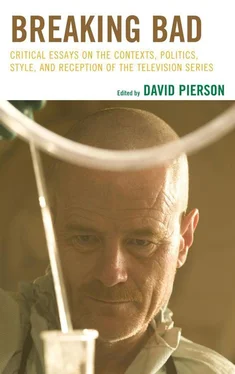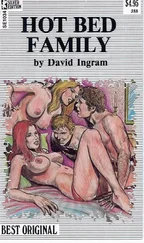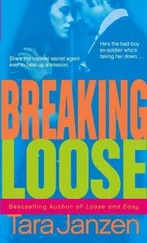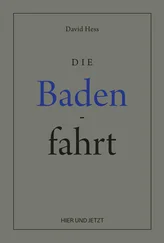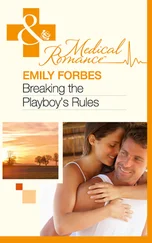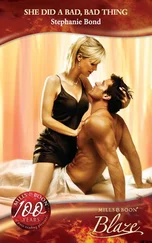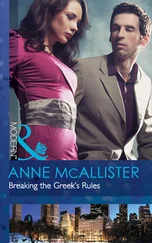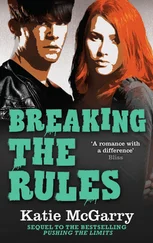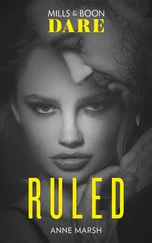It should be noted that the titles of the episodes including these teasers: “Seven Thirty-Seven,” “Down,” “Over” and “ABQ,” represent a paratextual clue. All the titles together form the phrase “737 (Boeing) down over (ABQ).” It is true, then, that for the viewer who knows this information, the first two episodes would be enough to unravel the mystery of the crash. However, even with this knowledge, images are confusing enough to maintain their status of ambiguity. In the same categorization we can include the teasers of the episodes “Grilled” (03/15/09), “Fly” (05/23/10), and “Bug” (09/11/11). All of them are designed under a similar structure based on the fragmentation of the extreme close-up as a strategy of disorientation. The case of “Fly” is probably the most extreme example of disorientation by fragmentation. This bottle episode [6] A bottle episode is an episode of a television series produced with the smallest budget possible. For that reason, usually these kind of episodes are set in a single location and employ only part of the regular cast of the show. For more information see “Bottle episode,” TV Tropes . http://tvtropes.org/pmwiki/pmwiki.php/Main/BottleEpisode .
opens with a series of extreme and blurry close-ups impossible to identify while we hear the voice of Skyler singing a lullaby in the background. Then, these close-ups become more explicit, showing insect legs, eyes, until finally there appears the image of a fly. As in the case of the plane crash sequence, this cold open alludes again to disorientation and confusion. At first, just for a moment, the viewer does not know what he is seeing on the screen. Once the fly is identified, it is impossible to place these images in the space-time context of the series. As the episode progresses the image makes sense when we realize that the main plot show us Walter obsessed with killing a fly. At the end of the episode, the image of another fly on a smoke detector in Walter’s home suggests that the cold open was actually a flash-forward spatially located in the house, with Skyler singing the lullaby to their daughter Holly. But, that is just a guess. The images are so fragmented that it is impossible to place them accurately in a context and a precise time.
On the other hand, the episode “Grilled” starts with extreme close-ups of a worm, some bullet shells, a few bottles of beer and broken glass before moving on to a series of fragmented shots of a car bouncing to reveal, in a wider shot, an unidentified body lying on the floor. At the end of the episode we will discover that it actually is a flash-forward teaser and that the dead body is Tuco’s. Until you reach that point, the teaser of “Grilled” moves into the realm of uncertainty. Moreover, in this case, the teaser launches a strategy of suspense through the juxtaposition of close-ups. This opening is similar to the classic final duel of Once Upon a Time in the West (1968). The beginning of the episode “Grilled” artificially slows the time down by stringing a series of close-up shots as we can see at the end of the episode. The sequence lengthens the duration of these shots in order to give the impression of suspended time. When the main story connects with the teaser it becomes apparent that the sequence of violent events has taken place more quickly than the teaser shows with its succession of extreme close-up shots.
Breaking Bad ’s teasers frequently employ the suspense device of extending the temporal duration of shots in their narrative sequences. This reference seems to be, once more, the first episode of the series with the slow motion picture of Walter’s pants flying in the desert, but there are more examples. At the start of the episode “No Mas” a succession of decontextualized shots delays the introduction of The Cousins and the sanctuary of Santa Muerte. In Breaking Bad , each opening episode seems to have the implicit objective of generating an uncomfortable image for the audience. Instead of recurrently coming back to a well-known and recognizable place, as dictated by the canons of seriality, the series appears to promote and foster the abyss of strangeness. Each episode can begin anywhere and in any way, to major confusion of the viewer. These openings question the idea of unlimited potentiality of each concept of beginning in literature and, by extension, by any narrative exercise.
TEMPORAL COMPLEXITY: WHAT IS THE PATTERN?
Breaking Bad , as much of contemporary TV series, frequently uses narrative structures that involve complex temporal disorder. As in the case of extreme close-ups, the fact of playing with temporality aims to capture the viewer’s attention by means of disorientation. Teasers seem to be the most predisposed examples of temporal dislocation and disorientation in the series. The Breaking Bad teaser combines, in the terminology of Gérard Genette (1983) “analepsis” (flashbacks), “prolepsis” (flash-forwards), and even ellipsis in order to create uncertain beginnings following the idea that “everything is possible.” The alternation of different temporary strategies in teasers appeals to serial repetition to play with the expectations of the audience. Once again, the first episode of the series will become a pattern for the rest.
As described above, the pilot of the series starts in medias res with a sequence that, after the opening credits, the audience is able to place in the near future. “Three weeks later” says a caption on screen. It is a beginning that immediately “How did we got here?” [7] See “How we got here,” TV Tropes . http://tvtropes.org/pmwiki/pmwiki.php/Main/HowWeGotHere .
and encourages the viewers to fill in the gap between that teaser and the beginning of the first act. Thus, the viewer understands that there is missing information to be discovered, as the story progresses, in order to interpret this beginning. For the audience, the story presents itself as a narration based on the search for clues in the same way it occurs in detective stories. But that is not all. Furthermore, the teaser of the pilot closes with a cliffhanger that maintains the action in suspense. Consequently, it creates another gap and, at the same time, another question is added to the previous one: “What happens next?.” This feature is typical of in media res beginnings as Sternberg (1978) points out, “the reader is eager to have this withheld material not only in order to disambiguate and reconstitute the narrative past or even the present state of affairs per se but also to acquire the premises necessary for forming warrantable expectations as to the probable developments of the action in the narrative future” (54). If the viewer wants to disambiguate this beginning, she will have to wait until the end of the pilot. It is true, however, that the caption detailing the passing of three weeks has already offered the viewer some clues for interpreting this teaser.
At the start of the second season, in the episode “Seven Thirty-Seven,” the strategy seems the same. The episode begins with a succession of ambiguous images placed temporarily in a more distant future than the three weeks from the pilot. In this case, however, the series offers no interpretation guides to the viewer. From its second season, Breaking Bad ignores explicit timing marks reinforcing its commitment to the confusion. The viewer knows from the experience of the first season that he can expect temporary disorientation. Beyond the pilot, the episodes “Cat’s in the Bag…” (1/27/08) and “…And the Bag’s in the River” (2/10/08) include a flashback in their teasers, while the episode “Crazy Handful of Nothin” (3/2/08) incorporates a flash-forward. In all cases, however, temporal disorder remains explicit. In the episode “Cat’s in the Bag…” there is a textual temporary mark on screen which reads: “Twelve hours earlier.” In the episode “…And the Bag’s in the River,” Walter’s physical presence indicates that we are in a flashback. The same occurs in the teaser of the episode “Crazy Handful of Nothin” where Walter appears with his head shaved indicating a flash-forward.
Читать дальше
